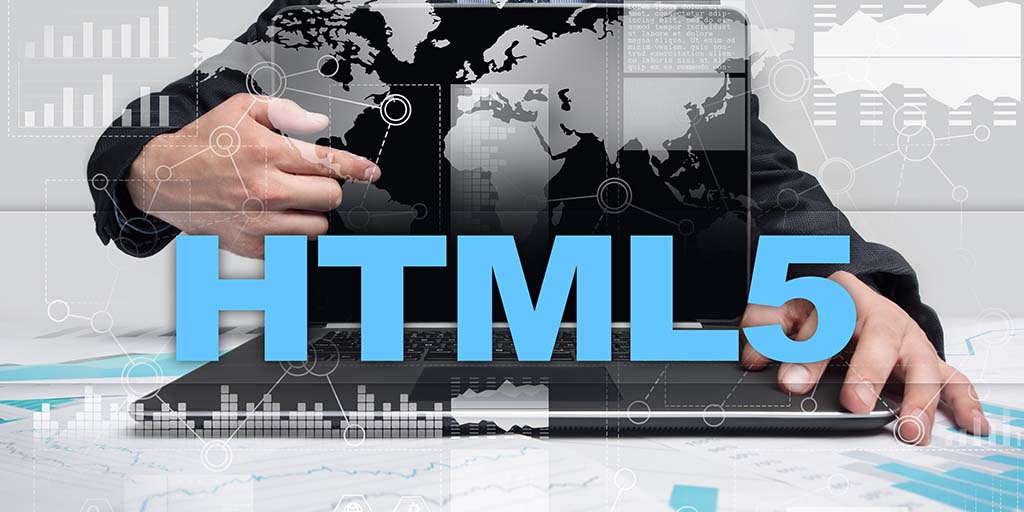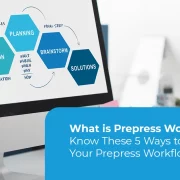Best Content Authoring Tools for Flash to HTML5 Conversion
[vc_row][vc_column][vc_column_text]The advent of Hypertext Markup Language 5 (HTML5) is rapidly changing the world’s digital landscape. As HTML5 technology emerges to be the preferred choice for rendering videos online, the world has slowly started bidding goodbye to Adobe Flash. With HTML5 establishing its prowess, we now have a superior and more versatile technology to play videos online without sweating about downloading compatibility issues, or time wastage. This is a great boost for the upcoming online video era, predicted to be ruled by video content.
Related: Time to Migrate eLearning Courses from Flash to HTML5
In times of such transformation, global companies are gearing up to change their online flash content to HTML5 to stay relevant, updated, and ahead of the competitors. Discontinuation of Flash after 2020 and the proliferation of mobile phones make Flash to HTML5 conversion the need of the hour.
Although it’s pertinent for businesses to transcend from Flash to HTML5, how they go about doing this without having to shell out a small fortune is the real question. Flash can be converted to HTML by using either pure coding or content authoring tools.[/vc_column_text][vc_custom_heading text=”Here are some of the best content authoring tools in the industry:” font_container=”tag:h1|font_size:18|text_align:left” google_fonts=”font_family:Lato%3A100%2C100italic%2C300%2C300italic%2Cregular%2Citalic%2C700%2C700italic%2C900%2C900italic|font_style:900%20bold%20regular%3A900%3Anormal” css=”.vc_custom_1562592983220{margin-top: 0px !important;margin-bottom: 0px !important;border-top-width: 0px !important;border-bottom-width: 0px !important;padding-top: 0px !important;padding-bottom: 10px !important;}”][vc_column_text]
1. Articulate Storyline
Articulate Storyline is undoubtedly the best in class when it comes to Flash to HTML5 conversion. Its effortlessness and efficiency sets an industry benchmark. Equipped with features to cater to just about anyone in the publishing business, Articulate Storyline specifically excels in helping publishers convert content from platforms such as desktops, laptops, iPads, and even from a variety of hand-held or mobile devices. It also provides the user with a wide range of default templates and interactive capabilities that can be customised for better results.
2. Adobe Captivate
Adobe is still in the game with its Adobe Captivate, originally created as a software program to help develop training simulations. Currently, it is emerging as one of the most dependable tools to carry out Flash to HTML5 conversion. Festooned with several innovative, interactive, and value-adding features such as support for Tin Can API, a widget for Twitter, and the capability of embedding YouTube videos, Adobe Captivate Flash makes for one of the best conversion tools in the world.
3. Lectora Inspire Conversion Suite
Known as the fastest conversion tool currently existing, Lectora is capable of converting text-dominated courses to simple and effective HTML5 formats ready to be rendered quickly, even on the small screens of hand-held devices. Lectora also prides itself on unique features such as in-built click-on-tabs, index or table of content, and many others. The tool also allows users access to create content on a wide variety of platforms like computers, iPads, and other hand-held devices.
4. iSpring Conversion Tools
A favourite among Flash animation to HTML5 companies, iSpring is a little more unique when compared to all other tools in the industry. Unlike other tools, iSpring is capable of converting PowerPoint presentations to HTML5 with elegance and ease. The tool supports conversion of all types of e-learning courses and modules. Users can create mobile-ready PowerPoint presentations without hiccups.
5. Elucidat
Elucidat’s design and features speed up the e-Learning process and thus enable users to develop high-quality e-Learning courses based on HTML5, accessible from any device. Being user-friendly and easy to use, this tool is a boon for beginners. The look and feel of the tool allows learners to create their own interactions.
6. dominKnow | One
dominKnow | One has become popular as a useful content authoring tool in the e-Learning segment. The dominKnow platform has released a number of authoring tools which have been subjected to improvisation. dominKnow | One blends power and superior responsiveness to facilitate simulations of software. Being cloud-based gives it the added advantage of allowing extensive collaboration, thereby reducing project turnaround time. The tool also allows usage of custom scripts, triggers, and variables for higher customisation.
Recreation and rebuilding of the interactions which were Flash-based can be done easily. The tool also promises to include more advanced features in its future versions.
7. Easygenerator
Easygenerator, as the name suggests, is perhaps the easiest to use authoring tool in the market. With its design and features focused on ease of usability, the tool facilitates the development of e-Learning courses in-house. Although the tool lacks a number of interactive features, offered by other authoring tools, it makes up for this shortcoming with its easy to use, responsive nature.
8. SmartBuilder
SmartBuilder allows for the creation of e-Learning courses, which are complex in nature right from the start. Various content types such as quizzes, textual content, and multimedia elements can be integrated into it in the blink of an eye. However, the tool does not support editing of videos and recording screens.
Related: Benefits of Investing in Custom eLearning Courses for your Enterprise
9. Gomo
Gomo is a cloud-based content authoring tool that presents an intuitive interface and allows e-Learning developers to work and collaborate across geographies, literally from anywhere and everywhere. Gomo allows for more agility in Flash to HTML5 conversion by featuring quick start wizards and in-built templates for higher productivity. Gomo’s two hallmark features are its support in multiple languages and the inclusion of beginner guides that offer step-by-step direction for developing e-Learning courses to freshers and novices.[/vc_column_text][vc_custom_heading text=”Conclusion:” font_container=”tag:h2|font_size:18|text_align:left” google_fonts=”font_family:Lato%3A100%2C100italic%2C300%2C300italic%2Cregular%2Citalic%2C700%2C700italic%2C900%2C900italic|font_style:900%20bold%20regular%3A900%3Anormal” css=”.vc_custom_1562593053499{margin-top: 0px !important;margin-bottom: 0px !important;border-top-width: 0px !important;border-bottom-width: 0px !important;padding-top: 0px !important;padding-bottom: 10px !important;}”][vc_column_text]Although the content authoring market is brimming with a number of content authoring tools, you have to make an informed decision based on your budget and requirements. If you are looking to convert your legacy Flash-based content to HTML5, you can avail HurixDigital‘s Flash to HTML5 conversion service which offers enhanced interactive features, audio, video, games, 3D animations, and customized to your needs. Hurix has converted 10,000+ content screens, 300+ simulations and activities, 200+ games and labs, 50+ WBTs and e-learning courses. Given the level of expertise, you can be assured of the best quality output that will meet your organizational goals.
Related:
5 Reasons Why You Should Convert Flash to HTML5
How to Convert your Content from Flash to HTML5?
How to Convert Flash to HTML5 at Scale
Time to Migrate eLearning Courses from Flash to HTML5
[/vc_column_text][/vc_column][/vc_row]











